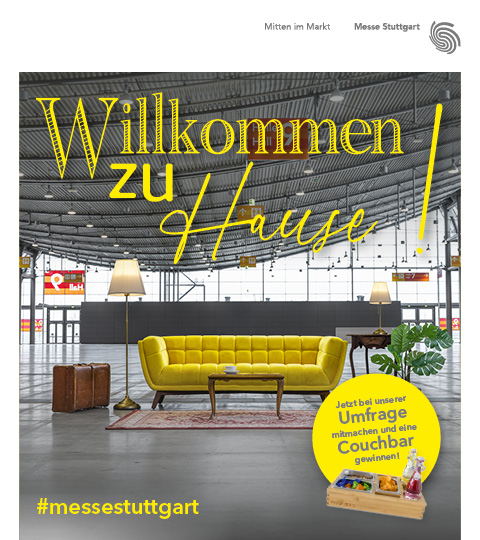Analytic tools for live events
Photo: Adobe Stock, Suphachai
Photo: Adobe Stock, Suphachai
The flood of data is growing, and with it the need to explore new ways of analysing it. Artificial intelligence is making inroads here: it transforms feedback into usable insights, makes visitor flows measurable and has long since taken on tasks in CRM and lead nurturing.
Many still rely on simple participant surveys or intuitive key figures for evaluation and strategic planning. This is precisely what the working groups at the first ebx.lab Presence Meeting 2023 identified as one of the pain points in their organisations. Representatives from convention bureaus, DMOs, hotel and trade fair companies, providers of platforms for hybrid and digital events, as well as Deutsche Bahn and Telekom, accepted the GCB German Convention Bureau's invitation to discuss process innovations using artificial intelligence as part of the "strategic innovation workshop for new events, brands and experiences".
From feedback to insights: AI-supported survey tools
As an essential way to collect valuable data from participants at your events, tried-and-tested tools such as Google Forms, Jotform and Formstack face challenges. Depending on the size of the event and the number of parameters queried, the large volumes of data are difficult for human analysts to master. This is where new algorithms and comprehensive data models come into play, helping to extract relevant information from a variety of unstructured data sources and gain meaningful insights.
Good to know!
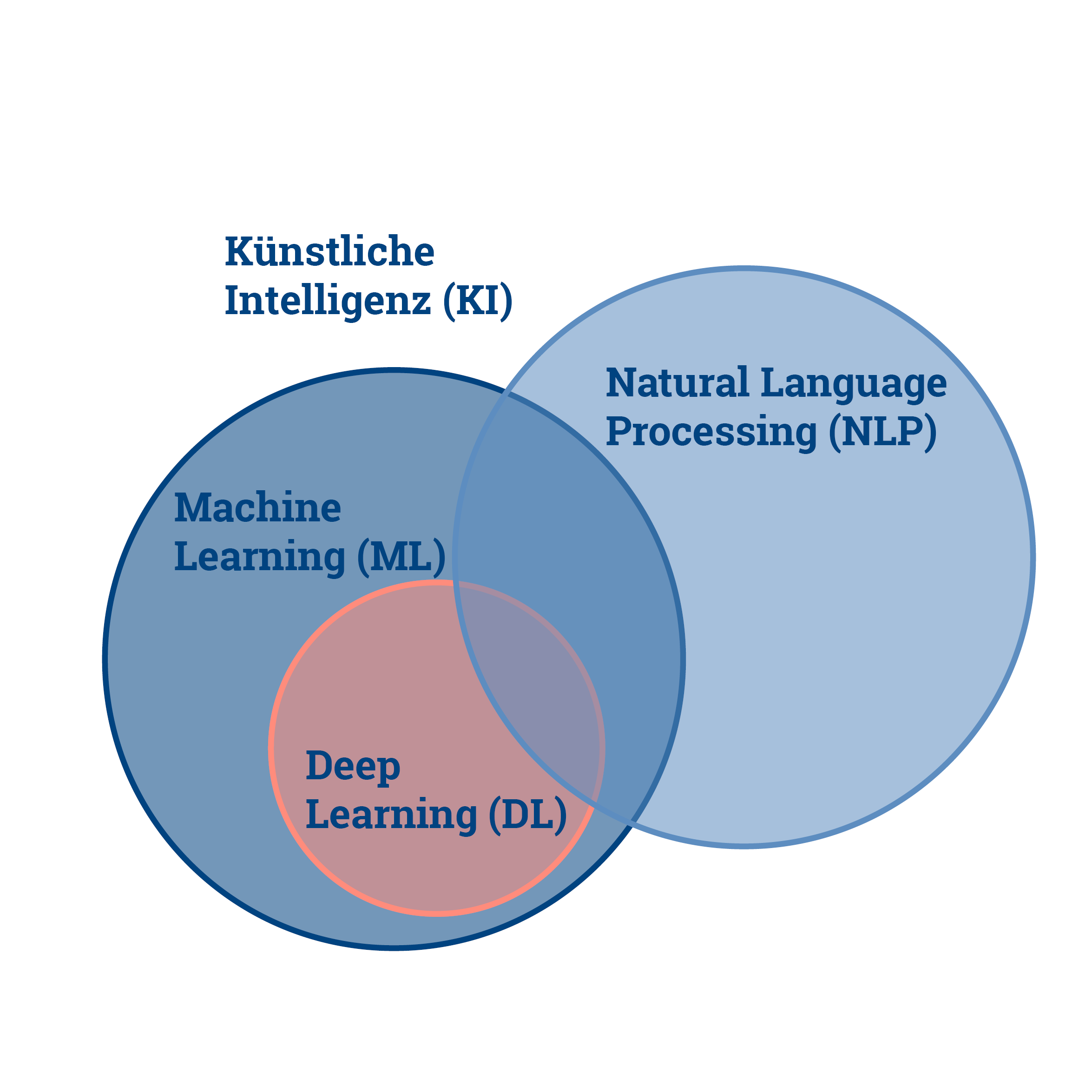
Machine Learning (ML): Systems learn patterns from data without explicit programming.
Deep Learning (DL): Extension of ML with neural networks, particularly strong for images and texts.
Natural Language Processing (NLP): Processing and generation of human language, basis for chatbots and translations.
AI-supported survey tools are already able to use machine learning and advanced algorithms to support data-driven decision-making for the development of future strategies and a well-founded evaluation of the success of past events. What's more, they can significantly accelerate this process: Used during an event, they enable organisers and planners to implement improvements immediately.
Advertisement
Surveys can also be designed to be more interactive and engaging than traditional questionnaires. Fillout AI Survey Maker and SurveyMonkey Genius generate questions automatically based on a prompt. Typeform and SurveySparrow design surveys as interactive conversations, sometimes with NLP-supported real-time responses. And gamification modelled on AhaSlides or TEDME also increases the response rate and checks how well content has been understood. The start-up Sci-an, Scientific Crowd Analysis, founded by the two PhD astrophysicists Dr Oliver Völkel and Dr Tobias Moldenhauer, takes a particularly innovative approach.
Their tools - the Voice Survey and the Chatbot Survey - enable open responses via voice input or chat, in the style of a WhatsApp conversation. The data is analysed in multiple languages and allows not only traditional evaluation, but also sentiment recognition. The AI recognises whether "exciting" means positive ("interesting") or negative ("tense"). In addition to sentiment images, the system recognises trends, response times or conversation lengths and provides the results in dashboards - including SWOT analyses and recommendations for action.
"No app, no download - the process should be as simple as possible," emphasises Völkel. The AI assistant not only takes care of the structuring, but also follows up on superficial answers. This turns feedback collection into an interactive experience.
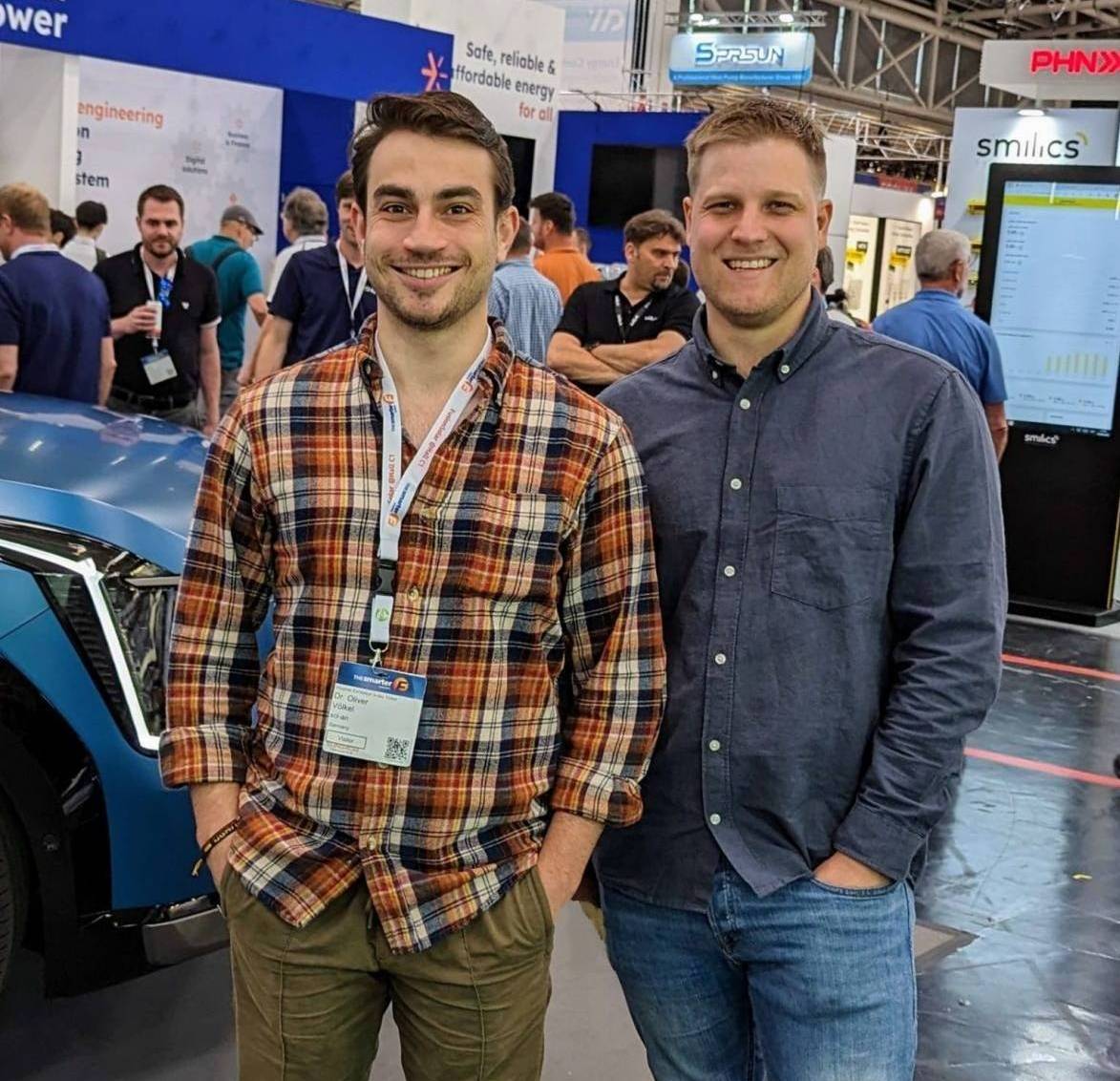
Astrophysicists Dr Oliver Völkel (left) and Dr Tobias Moldenhauer founded Sci-an to use AI-supported survey tools to visualise moods and trends at events. Photo: sci-an GmbH
Visitor screening at the trade fair stand
Analytics doesn't end with feedback. AI also provides new insights at trade fair stands. However, if visitor guidance is initially handled à priori by good stand builders and designers, this is not the task of evaluation. Rather, this lies in the question: Did the visitor guidance work? Visitor tracking is always about the following questions: How many visitors are within ten, 15, 20 metres of the stand and at least have the opportunity to make visual contact with the brand message and products? And further: How many visitors are on the stand, for how long and where? That is the far more exciting question ...
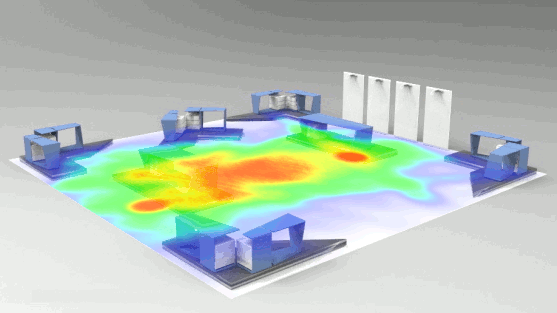
A heat map visualises the flow of visitors at a trade fair by displaying movement data in colour. Heavily frequented areas appear in darker colours, less frequented zones in lighter shades. This makes it possible to see at a glance where the trade fair audience is concentrated - and which areas receive little attention. Illustration: FastSensor
The technology with cameras doesn't really play a role here. Firstly because of technical shortcomings, costs and, above all, the General Data Protection Regulation. The precise method of choice is tracking via sensors that determine how many people are on the stand via WiFi at many points on the stand.
Tracking via smartphone signals
This is done via the smartphone signals sent out by trade fair visitors. A lot of information can be retrieved from these signals, such as the type of hardware used by visitors. It is therefore possible to know the transmission strength of the device and determine how far away the person is. However, there are still limits to the technology in terms of the exact position on the exhibition stand. For example, if a visitor has two lipsticks in her handbag, you get a completely different signal strength, with a measurement error of around 20 per cent.
That is certainly tolerable. After all, it doesn't really matter whether you have 835 or 790 visitors at your stand. It's more about having an objective benchmark in the sense of ceterus paribus. This means that if you have a measurement error, it remains the same and you can easily find out whether one trade fair concept is better than the other. The signal strength can therefore be used to measure the number of people on the stand precisely in terms of time. This is where the next key figure comes into play, namely Total Interaction Minutes, the average time spent by visitors to the stand, which in turn verifies interest in the product and does not just indicate the number of visitors.
It's all about interpreting the data correctly!
With Event-Metrics Pro , many sensors are used on larger stands. The sensors are networked with each other and communicate recognised smartphones with their signal strength and determine the triangulation via GPS. The visitor flows are then determined and mapped in cohorts. Is that complicated? Can the customer organise this themselves or does external specialist support pay off in any case? Does a change of technology make sense, or is it better to use a constant technology? Dr Christian Coppeneur-Gülz, Managing Director of stand builder WWM, answers these questions:
"In the past, the simple standard technology with three values came into play at smaller stands: How many people saw my stand, how many people were at my stand and how long were they there? This was linked to the leads from the CM. Now we realise that the more technology and depth of information we provide, the sooner we have to prepare the data for the customer. Then it comes to interpretation. And that's when we're needed at the latest! Because more questions arise: Was this the motion sequence you wanted? Why were there so many people at this point in the heat map?"
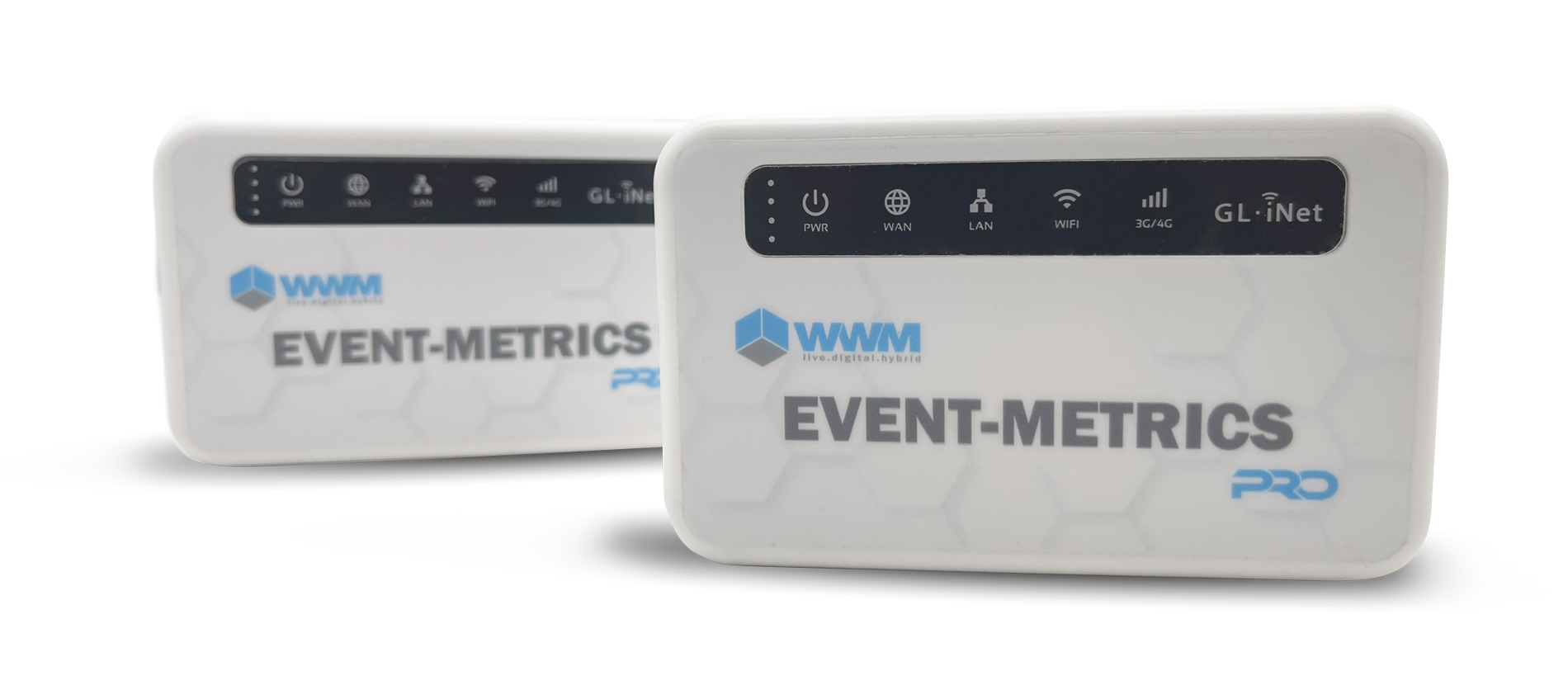
A small sensor at the trade fair stand uses Wi-Fi technology to measure the behaviour of event visitors in compliance with data protection regulations. This data can then be made available on the associated event metrics platform. Photo: WWM GmbH & Co. KG
Sometimes the explanations are quite simple when you take a holistic view of the trade fair process. For example, there is an ice cream stand at the position in question. Which in turn means that whoever was at the ice cream stand must not necessarily have been interested in the product! Typically, the average visit time is also high for catering at the stand between noon and 2 pm. So it's always about meaningful graphs, about recognising patterns. This also answers the question of whether a constant technology makes sense. Another important key figure is the cost per total interaction minute.
If you go there and divide a trade fair budget of 100,000 euros into 1,000 Total Interaction Minutes, for example, each interaction minute costs 100 euros. However, it is also possible to spend 200,000 euros on a trade fair and then have 4,000 interaction minutes. This means that the more expensive trade fair at first glance may well be the better one. This is where the ratio, the measurement figures provide an important supplement to the gut feeling of the marketing manager. Only where intuition and figures match in a variable intersection does the only relevant, proven truth emerge.
Improving performance with AI
Over half of the companies that attend trade fairs in Germany are already using AI! Visiting trade fairs with more or less random results and the great effort involved is a thing of the past. From a trade fair provider's point of view, SEO optimisation is also always an important issue, as people hardly google any more and instead work heavily with large language models or ChatGPT. This means that the information has to be placed completely differently in order to be found there.
Merksatz:
Wir kommen von SEO zu GEO (Generative Engine Optimization) oder LLMO (Large Language Model Optimization)!
The experiment described below illustrates this change from SEO to GEO: a large company set various LL models such as Gemini, Open AI and Complexity the task of selecting five customer gifts for Christmas - from the clothing, electronics, toys, etc. sectors. The budget for each was 800 US dollars. In the end, it turned out that iPods, iPads, Samsung tablets and even a Dyson hoover were selected for the electronics items. Only in the case of toys did each resulting model only ever suggest one product, and that was Lego: Lego. Obviously, a successful GEO strategy has been used here.
Optimising trade fair performance with AI agents
AI agents are software programmes that use artificial intelligence to complete tasks and pursue goals on behalf of users. They demonstrate logical thinking, can plan, remember and have a certain degree of autonomy to make decisions, learn and adapt. They can collaborate with other agents to coordinate and execute more complex workflows. For example, if you have set up an AI agent that can access all of your own company information, this AI agent can interact with all other AI agents and explore intersections that speak in favour of personal contact at trade fairs.
This can happen in real time and changes the entire interaction. Either the organiser enables each participant to "bring along" their own AI agent and link it to the event platform or app, or the participants can upload all sales-relevant information to the platform, for example via a questionnaire or a virtual interview with an AI chatbot (company website, personal LinkedIn, a PDF of the product range/offer, information about the relevant target customers, etc.). On this basis, the event platform then creates a trade fair agent for each participant, who then searches for potential contacts before, during and after the trade fair, contacts them in a fully personalised manner and arranges appointments.
Myon, humanoid robot, in action at Messe Berlin - a symbol of the growing presence of AI technologies in the event industry. Photo: Messe Berlin
If each participant has such an agent, only the agents speak directly to each other for targeted matching, appointments and more. Basically, it's as if each participant sends their assistants in advance to prepare everything. At the same time, such agents can also better organise chance encounters. Users can communicate with their AI agent via WhatsApp, for example, and instruct it to create new contacts as leads. This works with all communication tools such as Teams and LinkedIn, which can be linked to the AI agent. An AI trade fair assistant, which is personalised for each individual participant, saves the briefing, appointments in the calendar, individual tips for spontaneous stand visits and much more.
No more manual input of CRM content
The tool knows exactly what the relevant topics and objectives are and searches for important contacts accordingly. Perhaps the agent has already had a conversation with other agents and comes to a mutual agreement on goals and appointments? What sounds like science fiction is already a reality with reasoning models. Reasoning models are multimodal and a type of language model or LLM that is able to run through complex thought processes and provide precise answers. A reasoning model breaks down the question into individual steps and works its way through a "chain of thought" to arrive at a well-founded solution.
Such models begin to think for themselves and can perform complex tasks independently. Conclusion: If humans no longer want to endlessly collect and create data, they simply instruct the AI to create the leads - in real time at the trade fair and immediately after a conversation.
CRM specialist HubSpot has developed a product that configures AI agents for CRM systems that are based on the principle of vectorisation and read data differently to humans. In future, CRM systems will no longer be set up by people who laboriously enter contacts into tables via an arbitrary interface, but by AI. For event organisers, the combination of event management tools with CRMs makes work considerably easier. The choice depends heavily on the specific requirements and the need for integration into existing systems:
- SimpleEvents.io: Particularly suitable for HubSpot, including registration, QR check-in and feedback surveys.
- Eventbrite: Strong reach, synchronisation with HubSpot and Salesforce.
- Cvent: Ideal for large events, bidirectional integration with Salesforce.
Hans Jürgen Heinrich
